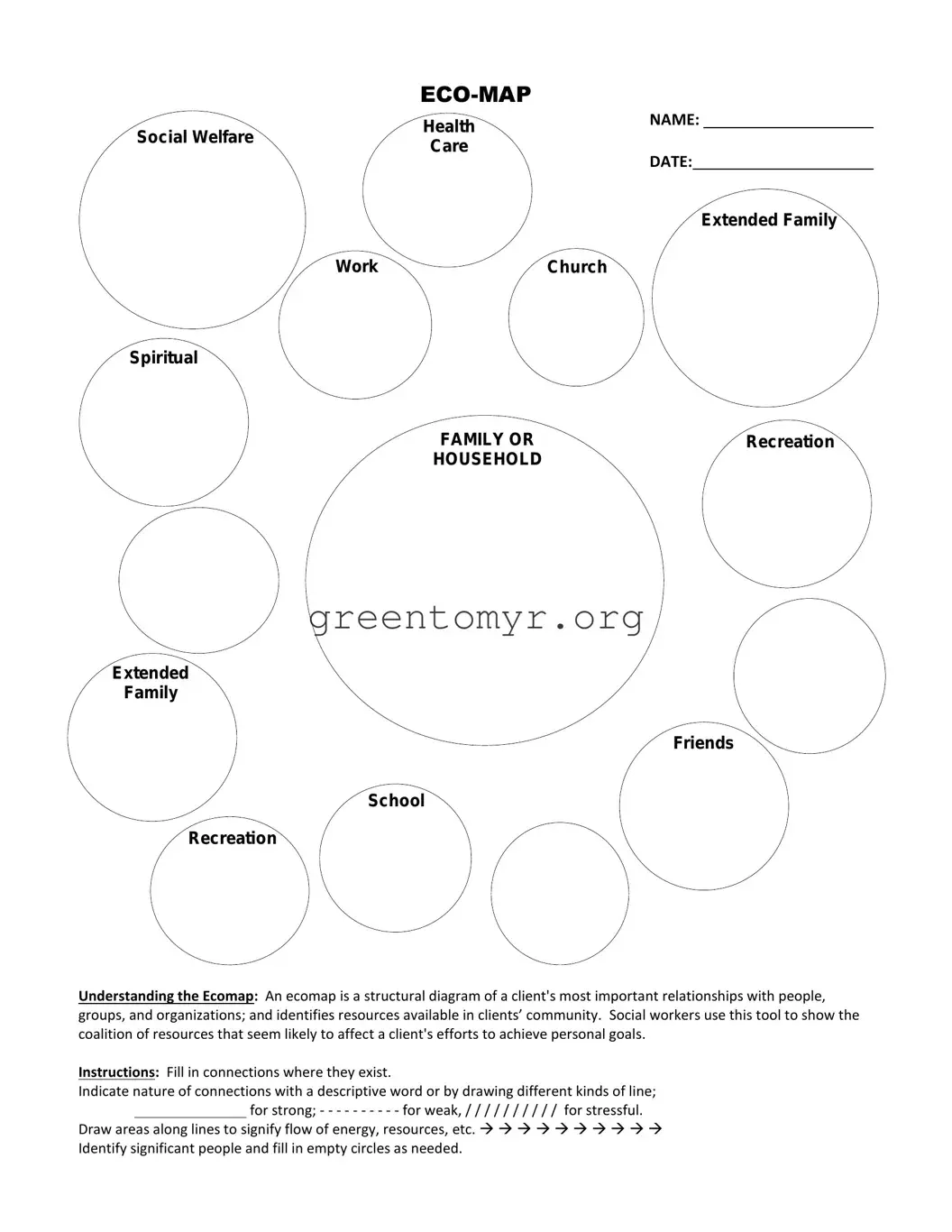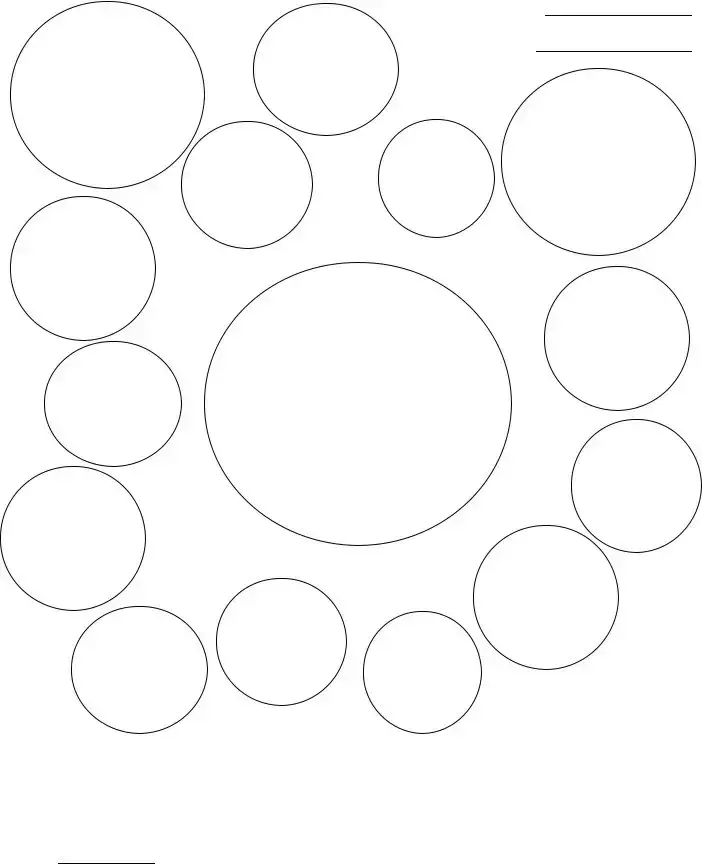Filling out the Eco Map form requires attention to detail and a clear understanding of your support systems. One common mistake is failing to accurately identify all relevant people and resources in your life. It’s essential to consider not just family and close friends, but also community resources and social networks that can provide support.
Another frequent error involves unclear or vague descriptions of relationships. When completing the form, it’s crucial to specify the nature of each connection. Instead of marking a relationship as simply “friend,” consider describing it as “close friend” or “coworker” to clarify the level of support or connection.
Many people neglect to consider the influence of professionals in their lives, such as doctors, therapists, or support groups. It's important to include these individuals because they play a vital role in your well-being. Omitting these connections can lead to an incomplete picture of one’s support network.
Additionally, some individuals overlook the importance of differentiating between supportive and non-supportive relationships. If someone consistently drains your energy or adds stress, it may be beneficial to denote that relationship as non-supportive. This helps to highlight areas where adjustments can be made.
Another significant mistake is not updating the Eco Map form regularly. Relationships and resources can change over time, making it necessary to revisit and revise the form periodically to reflect your current network accurately.
Some may also fail to recognize their own contributions to their support systems. It’s essential to include any roles you play for others or resources you offer, as this can illustrate a more comprehensive view of your connections and responsibilities.
Lastly, people sometimes forget to utilize the Eco Map as a tool for planning and growth. This form should not just be a snapshot of current circumstances; it’s a valuable resource for identifying areas where additional support could be beneficial and for understanding how to cultivate stronger connections.


